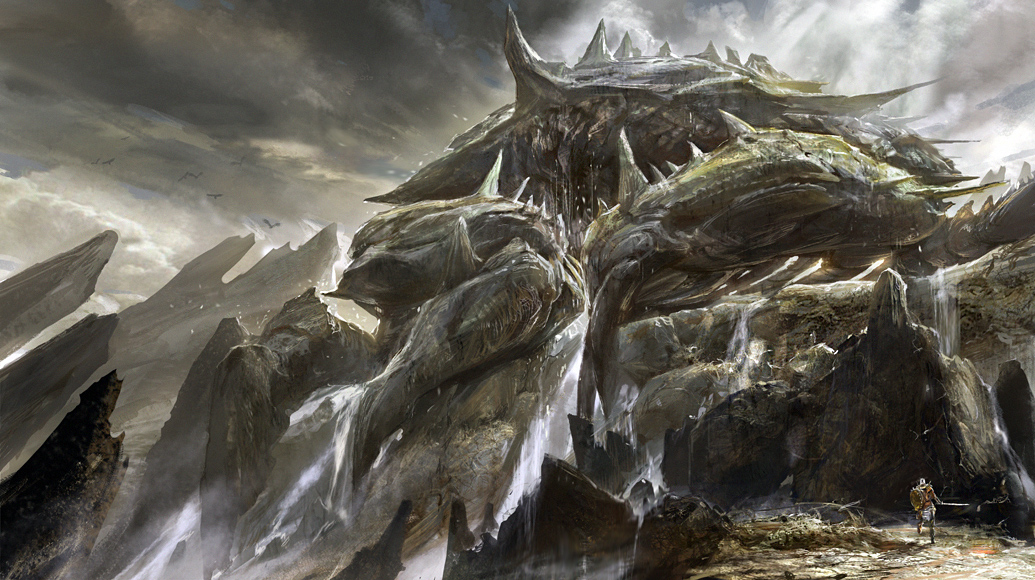You’ve heard the tales of Bakunawa, the giant serpent who attempts to swallow the moon. But have you heard of the gargantuan crab named Tambanokano (also spelled Tambanakaua)?
The belief in giant monsters swallowing the moon, and the wild efforts to frighten them away, are very widespread. It is found throughout the Philippines, as well as parts of Malaysia, Indonesia, Mongolia, China, and Thailand. These Asian stories were spread through trade with the expansion of the Indianized Kingdoms. In Vedic Mythology , Rahu is a Hindu demi-God who attempted to become immortal by swallowing a divine nectar. The Sun and Moon deities told Vishnu about this, which led to Rahu’s decapitation. To take his vengeance, he occasionally attempts to swallow the sun or moon – causing an eclipse. As Hinduism spread, it was absorbed into other cultures which evolved and adapted Rahu’s story to fit the society and animist beliefs of the time. It was these animist beliefs that we have to thank for such fantastical beasts. We know this because stories of moon-eating giants spawned all over the world without the help of Hinduism. For Instance, Vikings believed that two “sky wolves” were chasing the Sun or the Moon and an eclipse occurred whenever the wolves caught one of them. Hinduism evolved the moon swallowing beasts into pantheistic tales of vengeance, filled with adversaries and even love. Before, they were just giant beings doing what they were supposed to be doing, whether it be malevolent or benevolent.
While Bakunawa may be the most popular moon-eating giant in Philippine Mythology, he is certainly not the only one. In areas of Mindanao, there is Minokawa, a giant bird-like being. Also from Mindanao, buried in an old Mandaya folk tale recorded in 1916 by Mabel Cook Cole, is Tambanokano, a colossal crab, brought into the world through the union of the Sun & Moon.
The Mandaya people are a group of non-Christian, non-Islamic people living in Eastern Mindanao. As you’ll read in the story below, their folk stories and beliefs are incredibly fascinating.

The Sun and the Moon – Mandaya
The Sun and the Moon were married, but the Sun was very ugly and quarrelsome. One day he became angry at the Moon and started to chase her. She ran very fast until she was some distance ahead of him, when she grew tired and he almost caught her. Ever since he has been chasing her, at times almost reaching her, and again falling far behind.
The first child of the Sun and Moon was a large star, and he was like a man. One time the Sun, becoming angry at the star, cut him up into small pieces and scattered him over the whole sky just as a woman scatters rice, and ever since there have been many stars.
Another child of the Sun and Moon was a gigantic crab, named Tambanokano. He still lives and is so powerful that every time he opens and closes his eyes there is a flash of lightning. Most of the time the crab lives in a large hole in the bottom of the sea, and when he is there we have high tide; but when he leaves the hole, the waters rush in and there is low tide. His moving about also causes great waves on the surface of the sea.
The crab is quarrelsome like his father; and he sometimes becomes so angry with his mother, the Moon, that he tries to swallow her. When the people on earth, who are fond of the Moon, see the crab near her, they run out of doors and shout and beat on gongs until he is frightened away, and thus the Moon is saved.
SOURCE: Cole, Mabel Cook. Philippine Folk Tales. London: Curtis Brown, 1916.
Jordan Clark is a Canadian born descendant of Scottish immigrants living on the homelands of the Lekwungen speaking peoples. His interest in Philippine myth and folklore began in 2004. Finding it difficult to track down resources on the topic, he founded The Aswang Project in 2006. Shortly after, he embarked on a 5 year journey, along with producing partner Cheryl Anne del Rosario, to make the 2011 feature length documentary THE ASWANG PHENOMENON – an exploration of the aswang myth and its effects on Philippine society. In 2015 he directed “The Creatures of Philippine Mythology” web-series, which features 3 folkloric beings from the Philippines – the TIKBALANG, KAPRE and BAKUNAWA. Episodes are available to watch on YouTube. Jordan recently oversaw the editing for the English language release of Ferdinand Blumentritt’s DICCIONARIO MITOLÓGICO DE FILIPINAS (Dictionary of Philippine Mythology) and is working on two more releases with fellow creators scheduled for release later this year. When his nose isn’t in a book, he spends time with his amazing Filipina wife of 20 years and their smart and wonderful teenaged daughter.


